
Key Points
- High Beta/Low Volatility Tries to Stabilize Above Support
- Discretionary/Staples Rallies to a Key Level
- Copper/Gold Fights to Avoid a Breakdown
- Small Caps Continue to Improve vs. Large Caps
- Putting High Yield vs. Treasuries on the Radar
Key Themes and Relationships
High Beta vs Low Volatility
The High Beta to Low Volatility Ratio is consolidating between support and resistance, below the declining 50 and 200-day moving averages. The 14-day RSI has moved to the middle of the range after failing to become oversold on the most recent move lower. The indicator remains in a bearish regime to be clear, but we are not going to ignore the fact that it did not reach oversold levels. A move above resistance for the ratio would signal an increase in risk appetite.
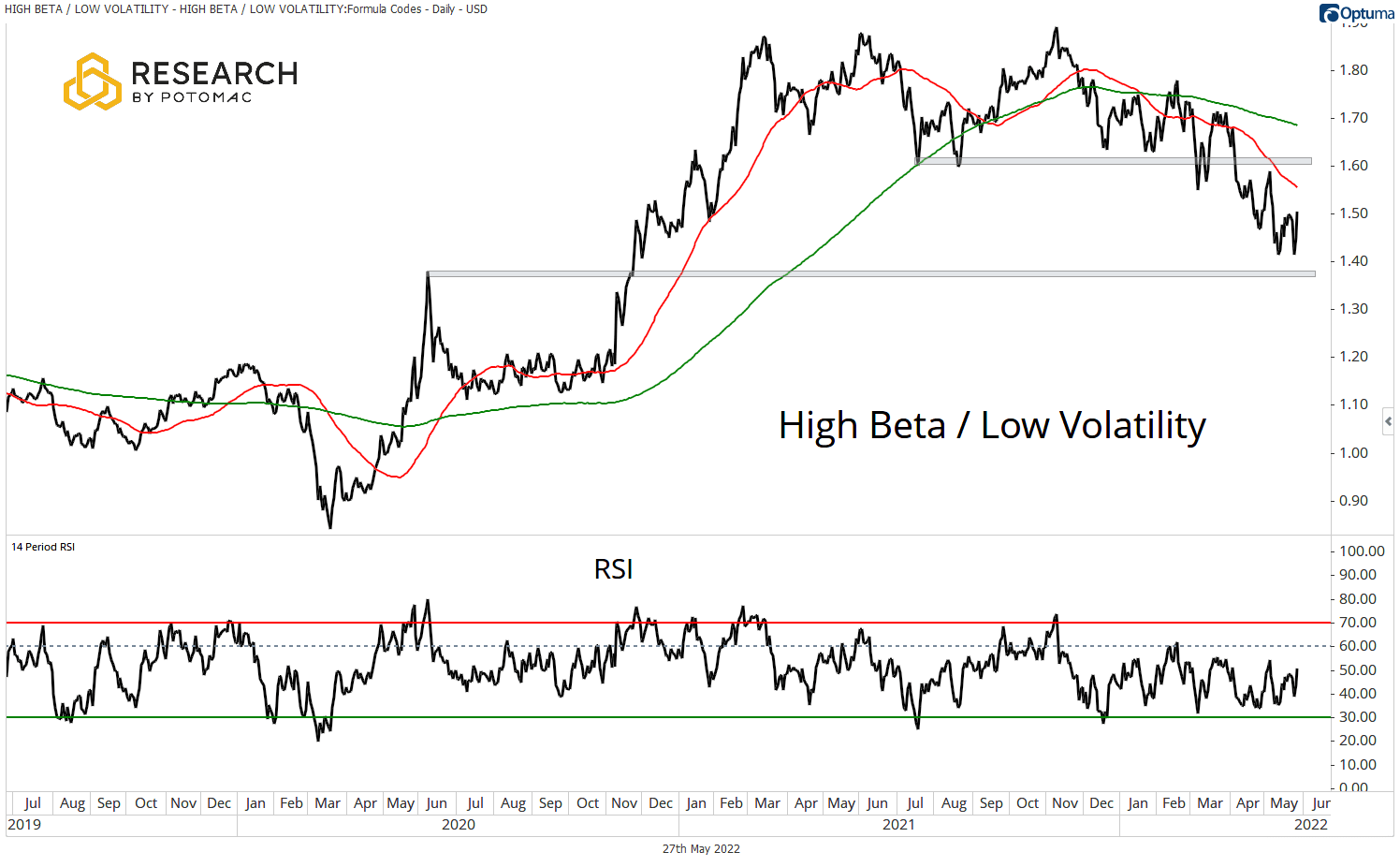
Consumer Discretionary vs Consumer Staples (Equal Weight)
The Discretionary/Staples ratio is trying to stabilize below resistance and the declining 50 and 200-day moving averages, as retail earnings have been better than expected over the past week. The 14-day RSI rebounds from oversold conditions but remains in a bearish regime for now.
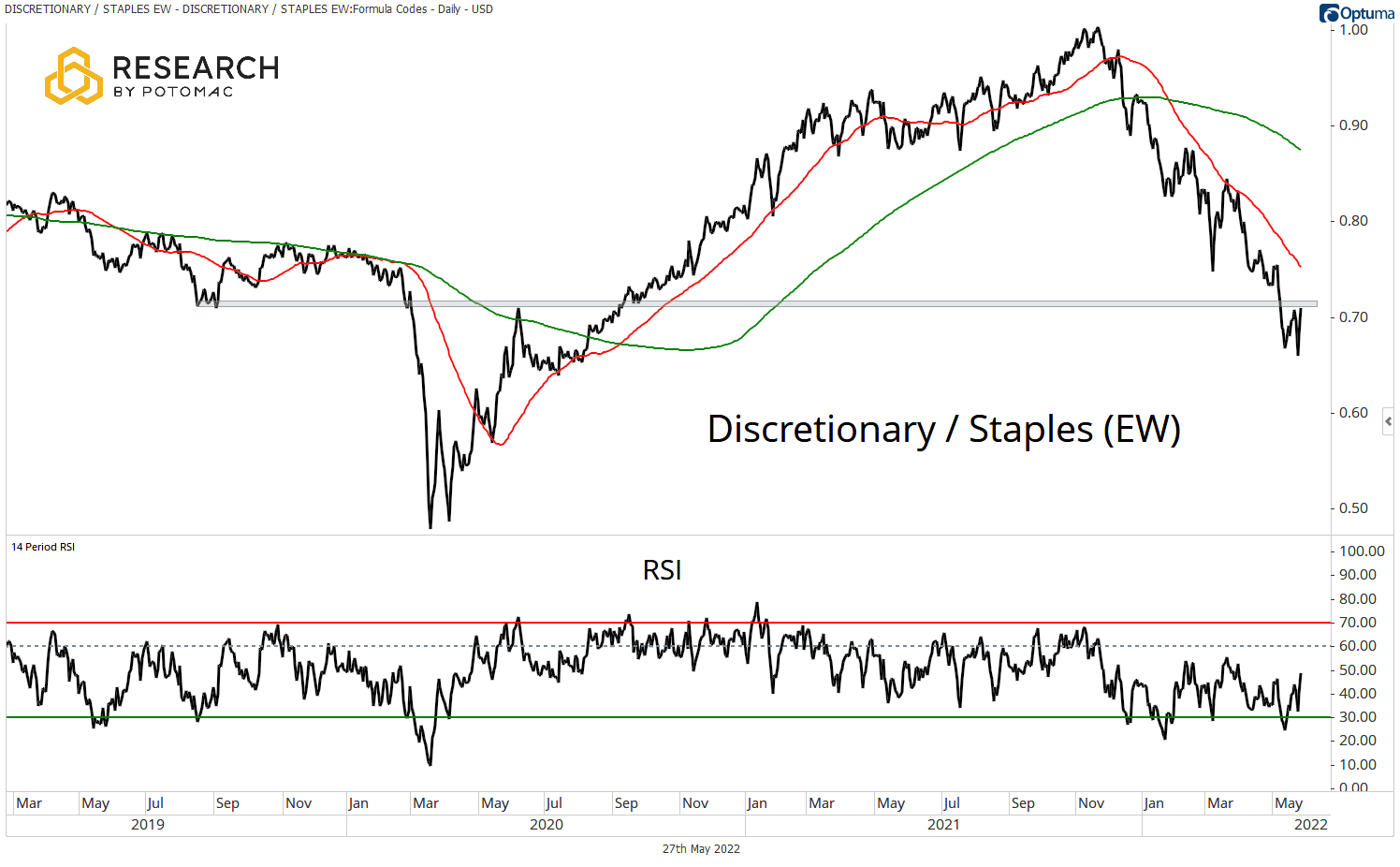
Lumber vs Gold
Over the past two weeks, the Lumber/Gold ratio has seen bearish price action after failing to break above the 50-day moving average. The ratio has fallen below the 200-day moving average, another bearish data point. The weakness is confirmed by momentum as the 14-day RSI has moved into an oversold position.
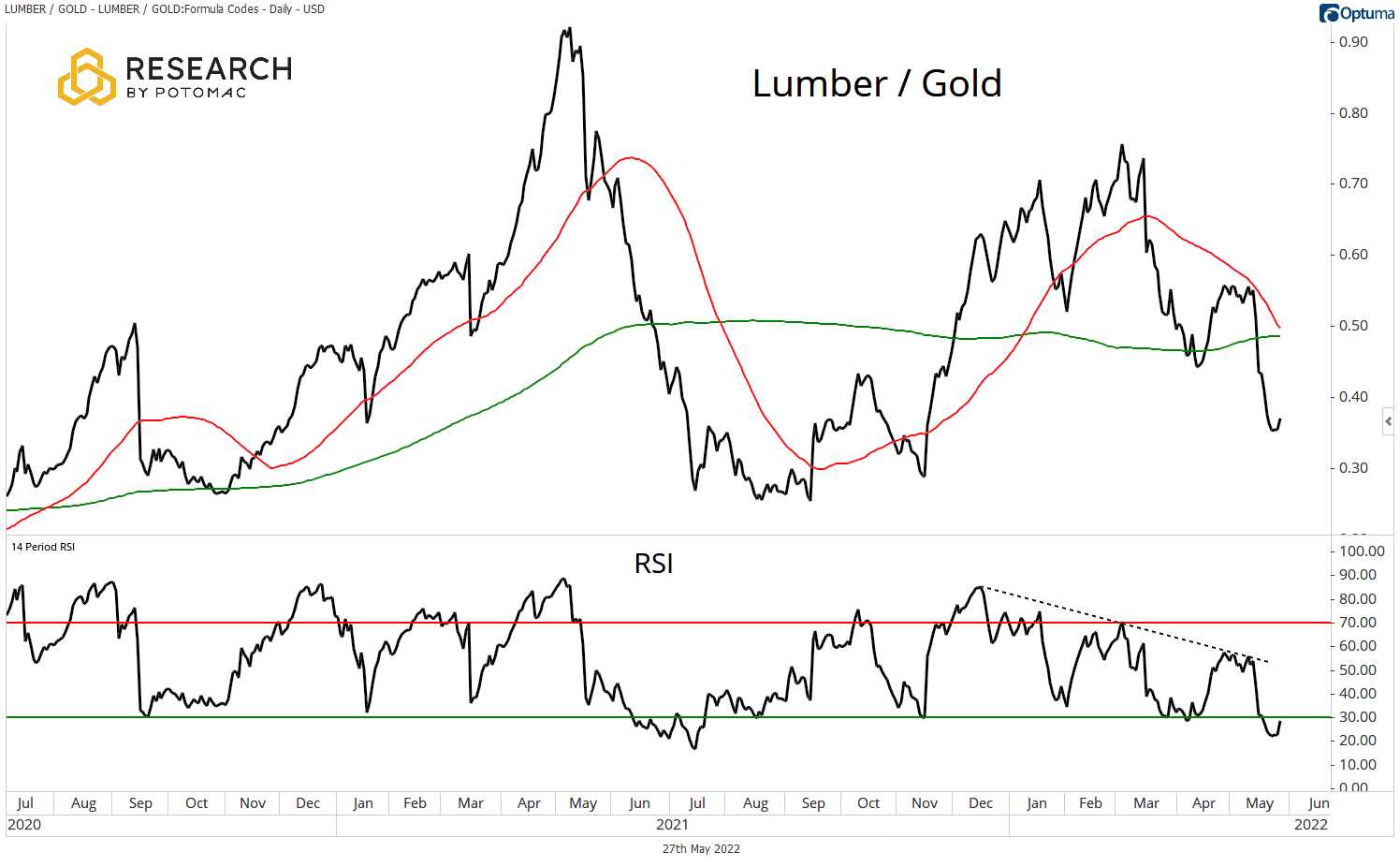
Copper vs Gold
The Copper/Gold ratio is fighting hard at support as it continues to trade below the 50 and 200-day moving averages. This keeps the 14+ month consolidation in place for now. The RSI is in the middle of the range, confirming the neutral price trend.
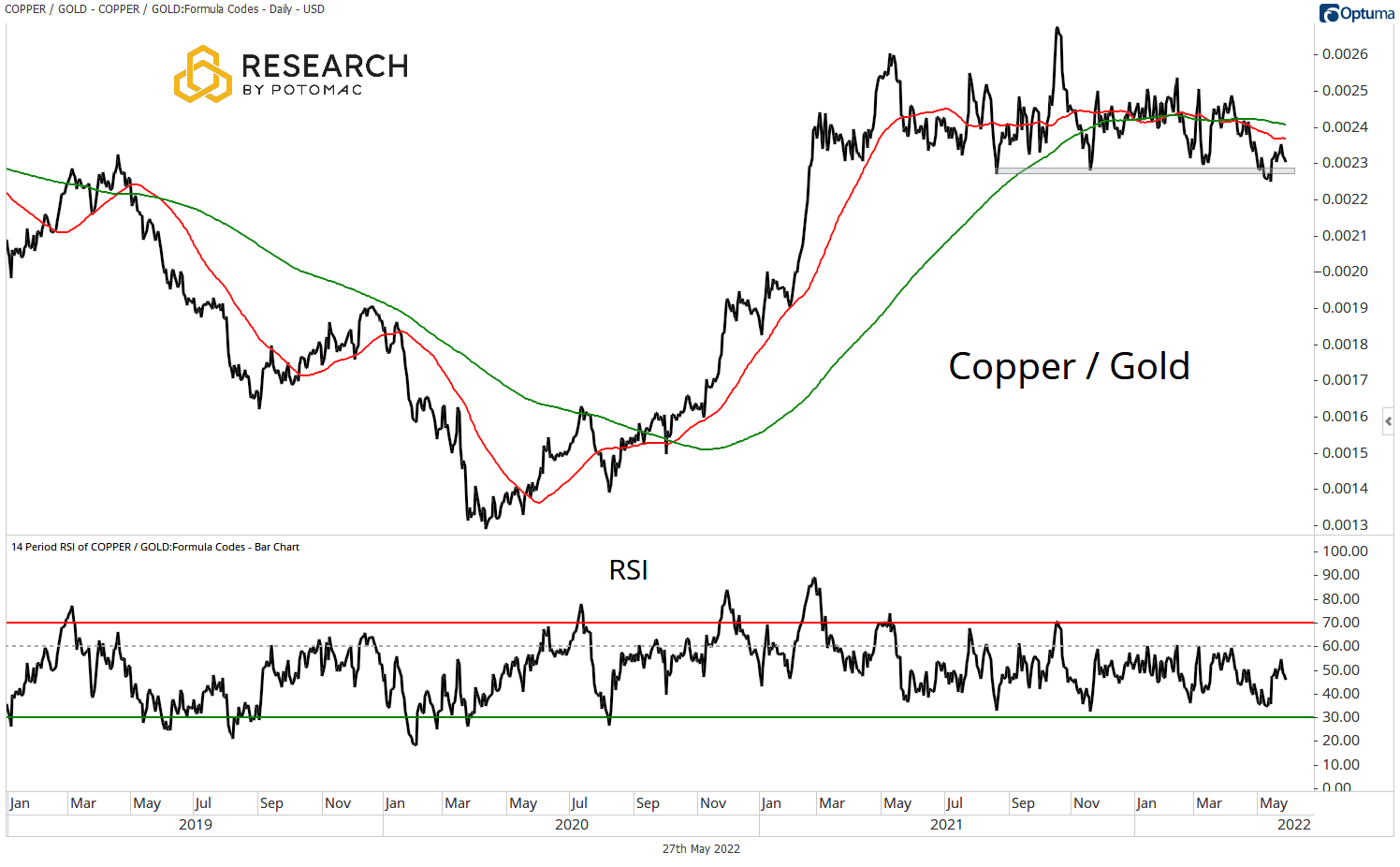
Small vs Large
Small Caps continue to outperform Large Caps in the near term. After holding support, the ratio has moved above the 50 and 200-day moving averages. The 14-day RSI is moving higher and, unlike the other themes in this note, has crossed above 60. In our note on May 13th, we highlighted the potential for Small Cap leadership, similar to what played out in the wake of the dot com bubble bursting.
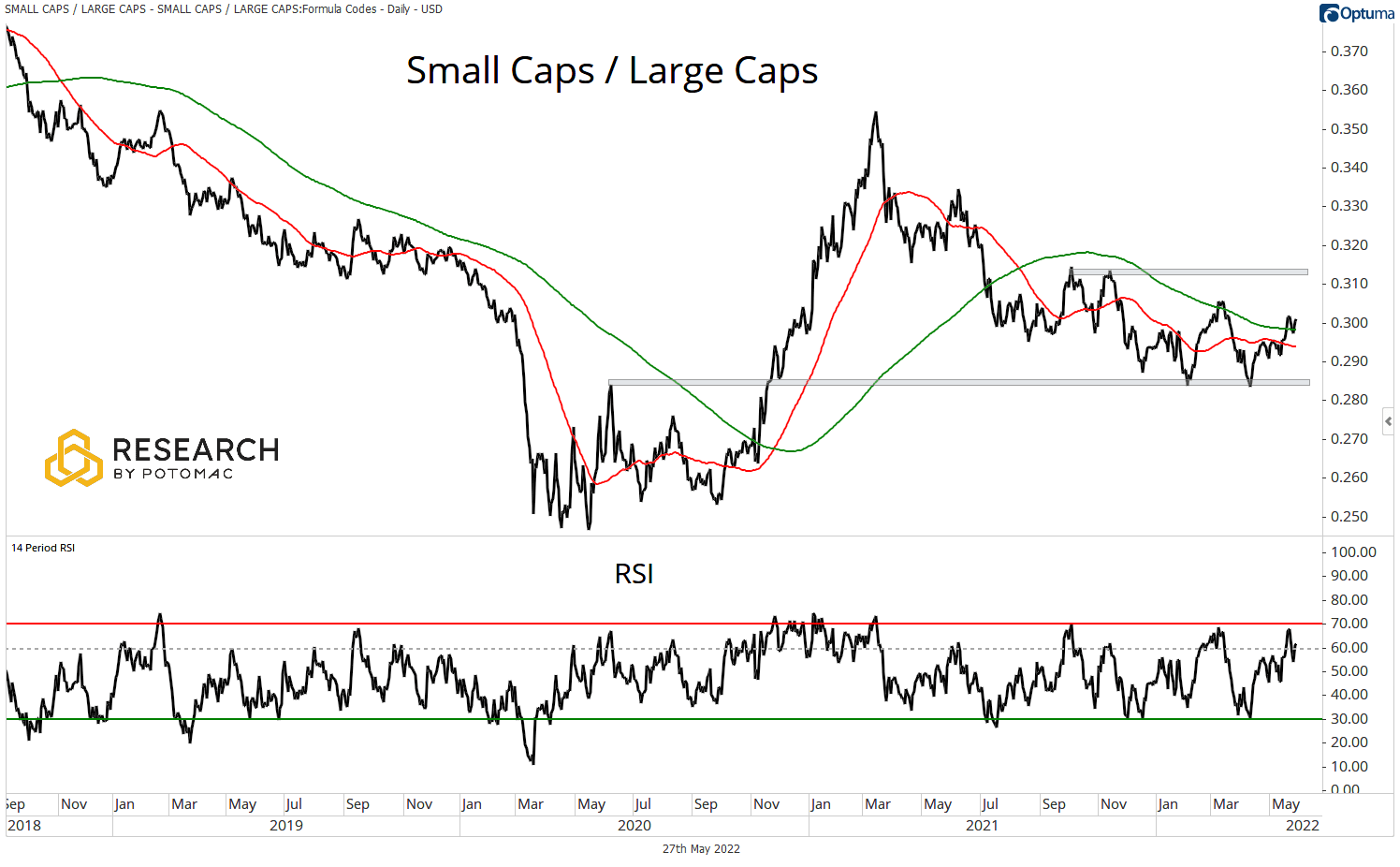
Growth vs Value
The Large Cap Growth vs. Large Cap Value theme continues to move lower after breaking support. The ratio is well below the declining 50 and 200-day moving averages, keeping the ball firmly in the hands of Value. The 14-day RSI confirms the trend as it sits in a bearish regime, close to oversold levels.
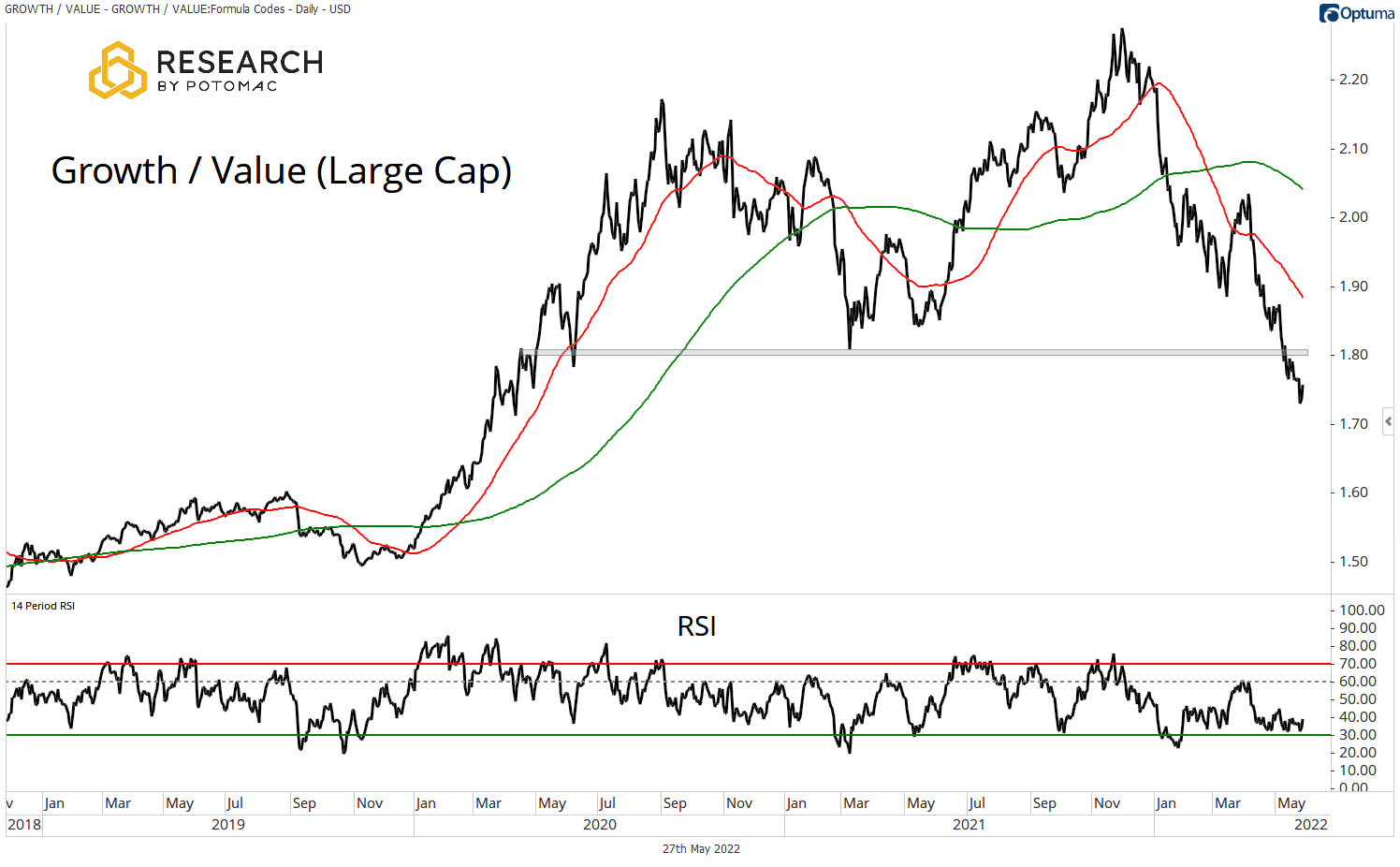
High Yield vs Treasuries
A new theme that we believe is worth having on the radar is the relationship between High Yield Credit and Treasuries. The ratio has staged a recent rally to move back to the underside of broken support below the 50 and 200-day moving averages. A break of resistance and the moving averages could be a sign of increasing risk appetite. After failing to become oversold on the breakdown, the 14-day RSI has moved to the middle of the range.
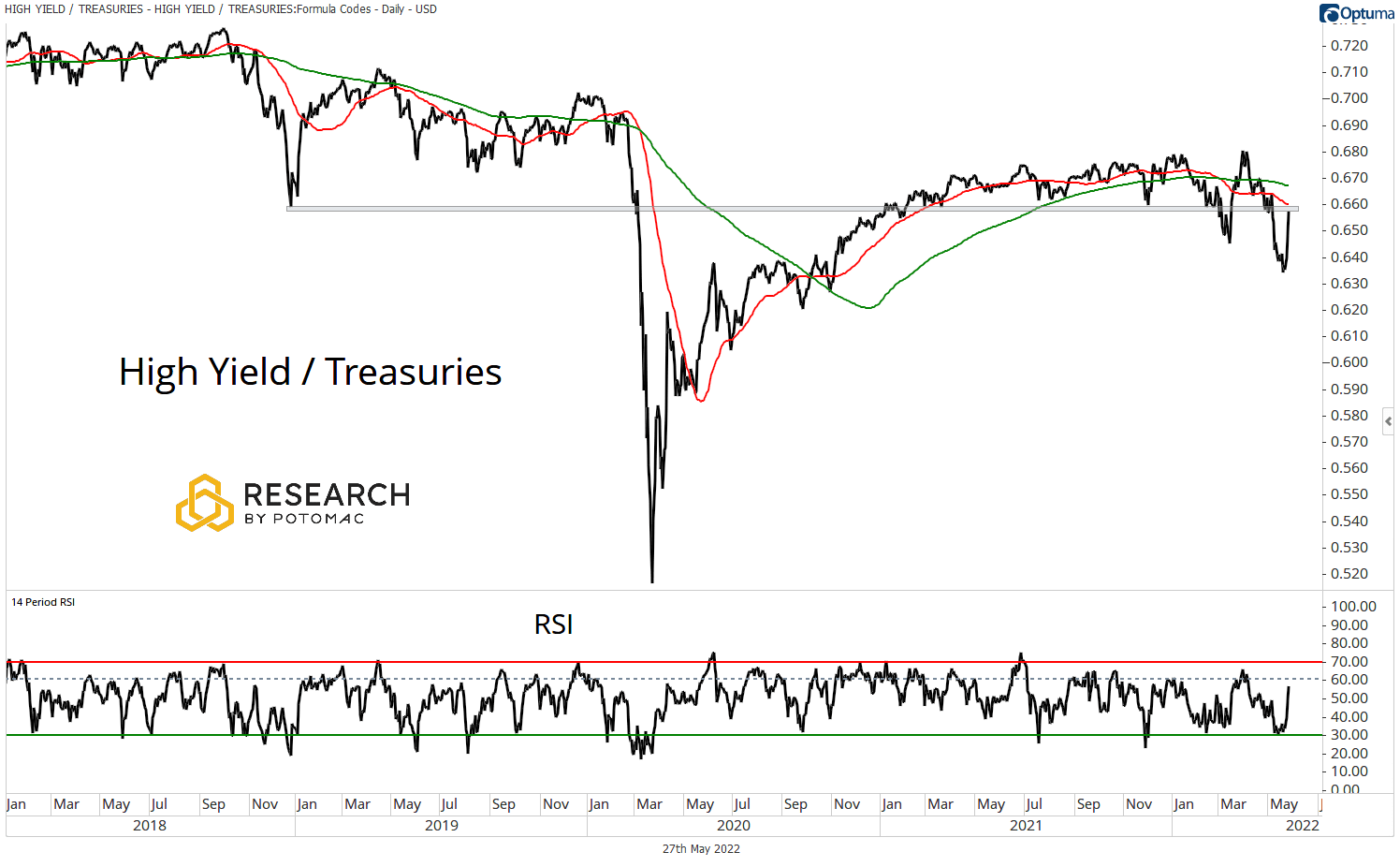
Take-Aways
While there have been some improvements in the near term, it is likely premature to state that investors have shifted to a risk-on stance. With the exception of the Small Cap/Large Cap ratio, many of these themes remain below resistance and/or key moving averages.
Disclosure: This information is prepared for general information only and should not be considered as individual investment advice nor as a solicitation to buy or offer to sell any securities. This material does not constitute any representation as to the suitability or appropriateness of any investment advisory program or security. Please visit our FULL DISCLOSURE page.
